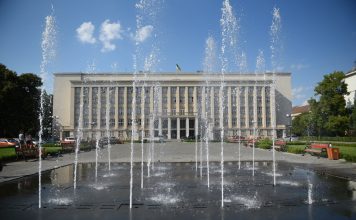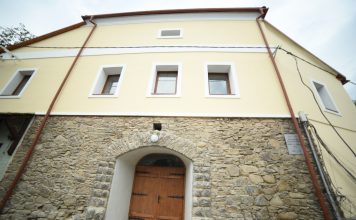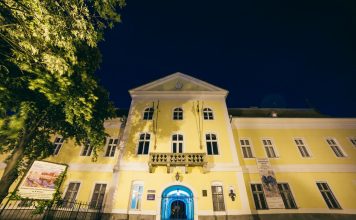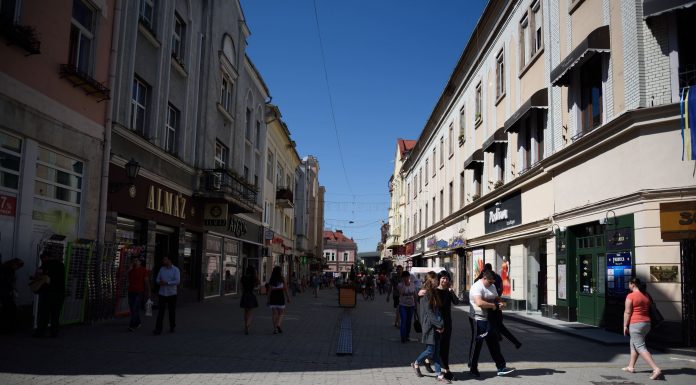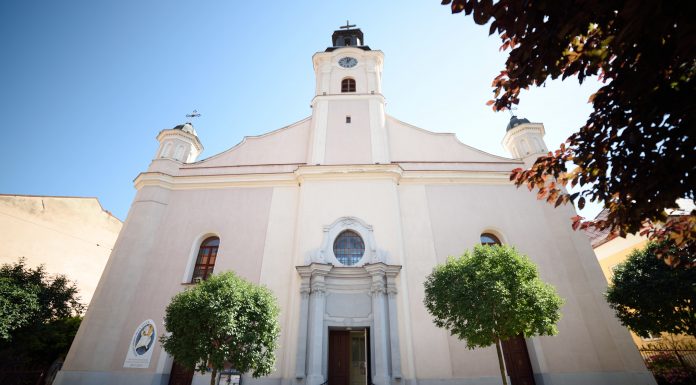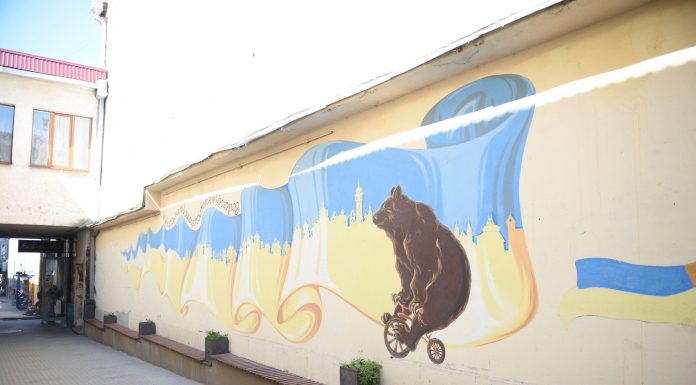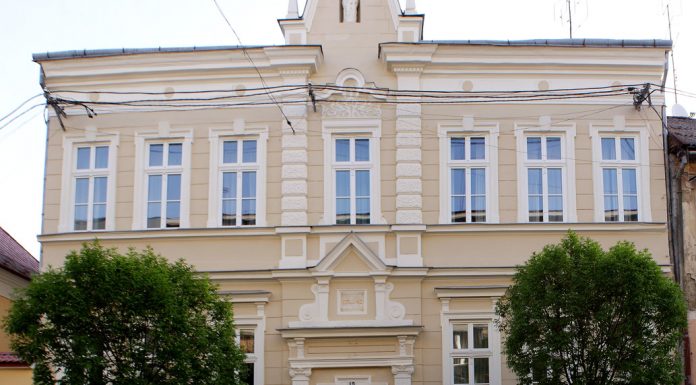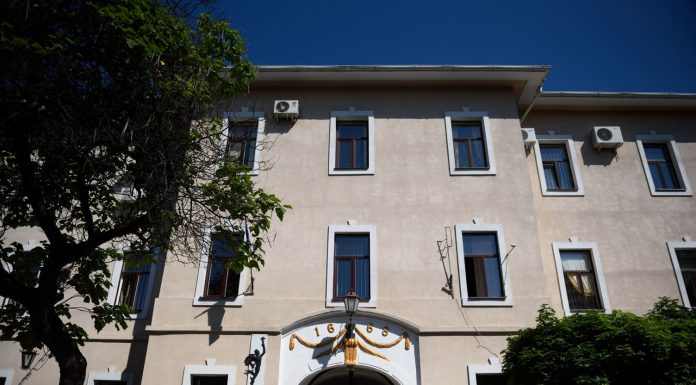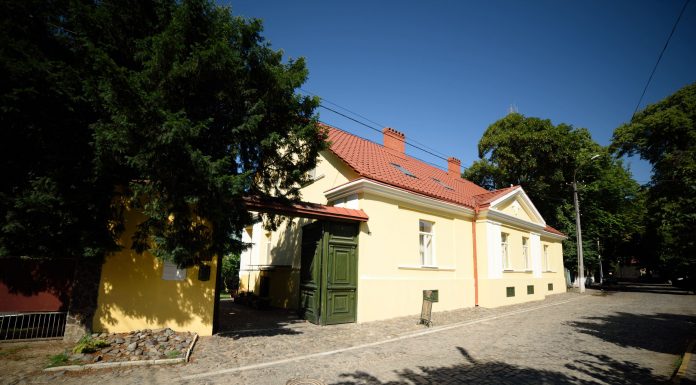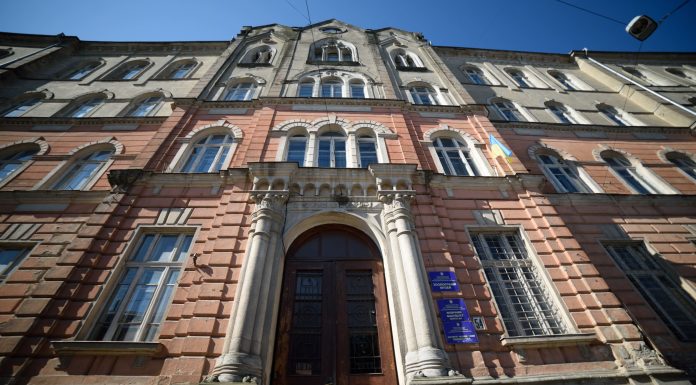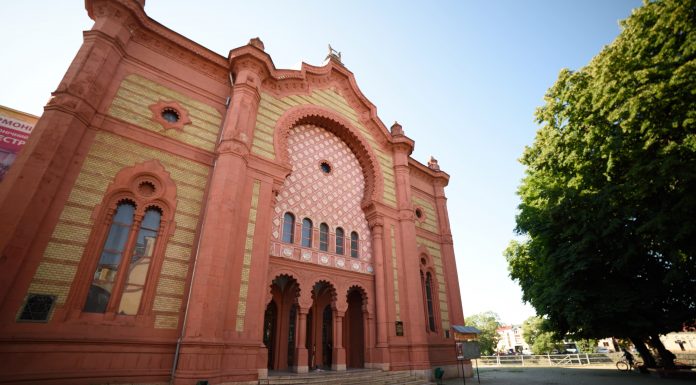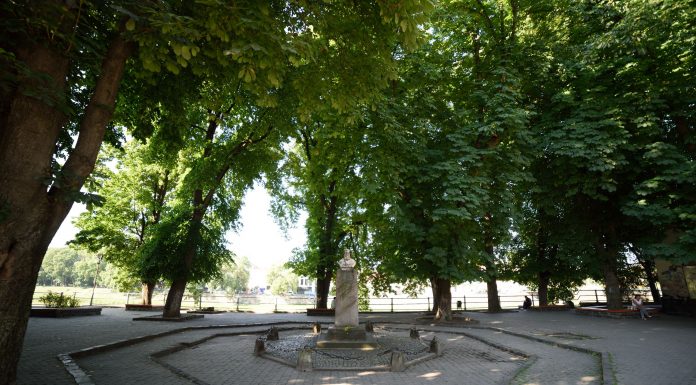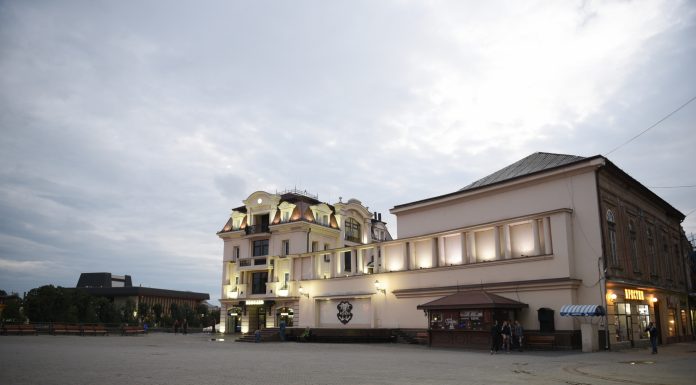In a 1691 description this street was mentioned as Mostova, or Bridge Street. Craftsmen that worked for the lords of the castle lived here. Since the time of Ukrainian independence the street has had the name Korzo.
Today this is a pedestrian area for strolls, recreation and shopping. Its modern architectural appearance emerged at the end of 19th century. Korzo Street...
The Church of St. George is a 17th century Roman Catholic temple, built by the mayor of Uzhgorod George Druget, in place of a destroyed Lutheran temple. In the 18th century the temple was rebuilt in neo-Baroque style. One piece of the interior that deserves special attention is an unusual neo-Baroque altar (1895) – the work of painter Johann Lucas Kracker. I In 2000-2001, after...
Bat’a Passage was built in 1927-1927, during the period when Uzhgorod and Transcarpathia were part of the Czechoslovakian Republic. It’s named after the Slovakian shoe manufacturer Bat’a. From the side of Theatre Square according to his vision the “Bat’a Palace” was built. On its lower floors there was a large shoe store, and on the upper floors, shoe repair...
From 1902-1907 the building housed a Christian educational institution for girls: the Roman Catholic Lyceum of St. Gizella. According to Hungarian history, St. Gizella was the wife of the first Hungarian king, Stephen I, who baptized Hungary. During Soviet rule, a music school was created in the building and the sculpture of St. Gizella, the symbol of the building,...
The building was built in the 17th century (1668). Initially, this building housed military barracks, and from the late 18th century, Uzhgorod gymnasium. In 1915 the City School of Commerce was founded, and from 1920 – the State Academy of Commerce. Following this tradition, today it holds the Uzhgorod College of Commerce. A plaque honoring Avhustin Shtefan, a famous...
Kapitulna is the oldest street in Uzhgorod, and was once called Castle Street. This was the only street located within the outer fortifications of the castle. In the 17th century it consisted of about 10 households. In the early 19th century the street gradually acquired the name Kapitulna, from “kapituliy”, or “cathedral chapter”, which was the place where advisors...
Built as a monastery to educate Basilian monks and Ukrainian children, the building was designed by Uzhgorod architect Ernest Kovosh. Its facade overlooks the street, and originally had four-storey central and three-storey side parts, which contained so-called Hanging Gardens.
This was the tallest building in Uzhgorod until World War II. Since 1947, it has been a part of Uzhgorod State...
Uzhgorod Synagogue was built as a Jewish choral synagogue of the Ashkenazi orthodox community in Uzhgorod. It was designed by architects Gyula Papp and Ferenc Szabolcs in Neo-Moorish style, which intertwines Byzantine and Arab-Moroccan motifs. It opened in 1904.
Currently, the building is used by the Transcarpathian Regional Philharmonic Society, founded in 1946. In 1974, one of the best stage...
Fentsyk Square is one of the most imposing places in Uzhgorod. Its construction began in the middle of the 19th century. Here, almost every building is of historical significance.
At the far eastern end of the square stands the largest and most beautiful Jewish synagogue of Transcarpathia. Next to it, on the bank of the river Uzh, is one of...
The square is named in honor of a theatre, opened on 7th of July, 1920 with a performance of the well-known Ukrainian play, “Natalka Poltavka”. In July 1921 the famous Ukrainian director Mykola Sadowskyi was invited to be the head of the theatre. Since 2005 the theatre has had the name „Bavka”. Long ago in Verkhovyna regions this was a generic name for...

